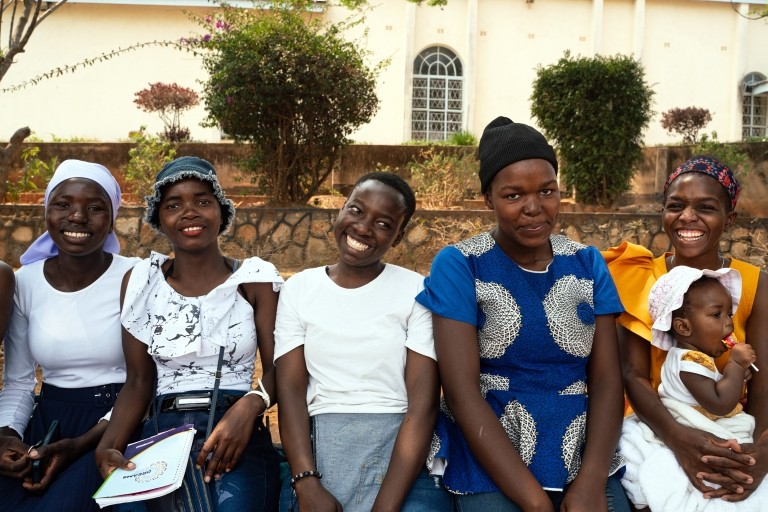Blog
To strengthen climate resilience in health, look to other development sectors

Negative health outcomes, such as acute malnutrition and infectious disease outbreaks, have been attributed to climate change, which only adds strain on health systems. As global temperatures rise and alter weather patterns, climate-related health shocks and stressors are likely to increase, raising direct and indirect costs to governments and communities globally and threatening the sustainability of health achievements. The need to act is clear.
The concept of climate resilience has been considered across multiple sectors to help prepare for and mitigate harmful effects. Examples include the propagation of climate-smart approaches and technologies in the agriculture sector, and the use of distributed off-grid solutions for productive uses in the energy sector.
However, health sector efforts toward climate resilience have largely focused on climate-smart facility electrification or information, education and communication activities, and have linked demand creation for environmental conservation practices with specific prevention-focused health services, such as family planning and birth spacing for benefits to population, health and environment.
Over the last decade, the World Health Organization has issued guidance for building climate resilience into health systems and how to measure threats to and progress toward a more resilient system. Some countries have implemented proposed measures and framework elements and have valuable best practices and lessons learned from these experiences that will be relevant for similar contexts. However, many health systems are contending with resource constraints intensified by economic impacts of Covid-19 and other events and may not be able to consider the high-level system restructuring or retrofitting proposed in global guiding frameworks.
In countries where implementing the recommended framework and selecting aligned measures are not feasible, and increased financial flow is not immediately available, Pact embraces drawing lessons from other sectors to support health system resilience to climate change at sub-national and lower levels. The reasons for strengthening resilience to climate change include:
- Progressive decentralization of health systems management
- Increased focus at the community level, where the impacts are most acute
- A variety of climate risks and ecosystems may be present within a given country
- Recognition of community-level structures and leadership to co-develop and support change
- Increased ability to leverage existing adaptive capacities born out of necessity
- More engaged and empowered communities, which can catalyze local capacity by improving communities’ understanding of vulnerability and developing appropriate local resilience response measures
- The ability to locally identify linkages with other sectors to reduce climate and health related impacts, such as minimizing exposure to local air pollution
As such, Pact is exploring “grassroots” approaches for strengthening climate resilience that are informed by other sectors. We denote where these are mainly theoretical and require supporting evidence and adaptation, as well as those practices for which data support translation across sectors.
In Madagascar, through the USAID Hay Tao project, Pact supported the development of a revised Protected Area Development and Management Plan template that integrated climate change dimensions to account for growing climate risks. The project team also integrated climate considerations into technical training on sustainable vanilla production to ensure greater resilience of the vanilla supply chain to growing climate risks such as devastating cyclones. A similar approach for sub-national health management plans can add measures to mitigate climate-related risks, leveraging province or district-level structures, and integrating locally adapted considerations into in-service training.
In Zimbabwe, Pact developed a variety of climate resilience measures based on climatic hazards, the level of vulnerability and the risks to which orphans and vulnerable children and their caregivers are exposed. These vulnerabilities and risks were identified through a community-based assessment in two provinces. Pact also provided training to local implementing partners on assessing climate change vulnerability across four key domains, namely education, livelihoods, safety and health. These assessment tools can be used by other multisectoral groups, such as community leadership councils, and bring diverse expertise and experience to develop targeted responses to findings, such as mainstreaming climate change considerations into mental health trainings for community health workers. We will be collecting further data to assess the effectiveness of this approach.
In Malawi, informed by a climate change vulnerability assessment, the USAID-funded REFRESH project supported the development of climate-smart technologies in the artisanal fish processing industry, including solar tent driers and improved cookstoves. These technologies helped reduce post-harvest losses as well as prevented further forest degradation. Similar practices could be harnessed for health facilities requiring climate-smart power, such as autoclaves and other sterilization approaches, presenting an area for further exploration and innovation.
Climate change has potential negative impacts across all sectors and has led to a variety of practices to mitigate risks in the short term and reduce fossil fuel and other pollutant use in the longer term. As countries move toward broader change at the national level, guided by global policy frameworks, localized engagement and collaboration across sectors can result in positive shared climate-smart practices. Moreover, a local multisectoral body and its approach could serve as powerful advocacy to various public agencies to better communicate activities and budgets to synergize and leverage existing allocations and efforts.
Collectively, these actions could lead to an incremental approach to global framework implementation and enable local health systems to function effectively in the face of climate change.